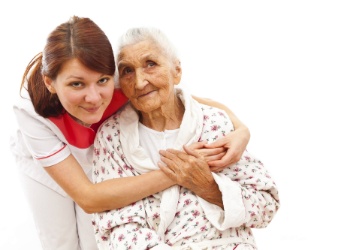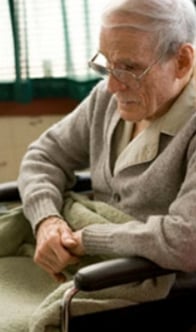- Solutions
- Accounting
- Additional Documentation Requests (ADRs) Management & Support
- Clinical Consulting
- EHR Implementation & Optimization
- Medicaid Eligibility
- Outsourced Contract Controller Services
- Outsourced Revenue Cycle Management
- PointClickCare® Consulting
- QAPI Consulting
- Resident Trust Fund Management & Advisory Services
- Revenue Cycle and Reimbursement Consulting
- Who We Serve
- Resources
- Careers
- About Us
- Contact

 The use of antipsychotics in geriatrics has been under scrutiny from the Centers for Medicare and Medicaid Services (CMS) for several years now. The use of antipsychotics in older adults poses a myriad of complications and side effects. Side effects include increased incontinence, weight loss, lethargy, confusion and increased incidence of falls. While antipsychotics can be used for the treatment of mental and behavioral issues, antipsychotics should always be the absolute last resort in the geriatric population.
The use of antipsychotics in geriatrics has been under scrutiny from the Centers for Medicare and Medicaid Services (CMS) for several years now. The use of antipsychotics in older adults poses a myriad of complications and side effects. Side effects include increased incontinence, weight loss, lethargy, confusion and increased incidence of falls. While antipsychotics can be used for the treatment of mental and behavioral issues, antipsychotics should always be the absolute last resort in the geriatric population. Picture this - you are a dementia resident on a secured dementia unit. You are wearing your favorite wool sweater and have a lap blanket because you get cold easily. You are confined to a wheelchair because of the severe arthritis in your hips and knees. Lunch has just finished and you are now dozing in the dayroom in your wheelchair. There is big band music playing in the background and the sun is shining on you through a nearby window. You are feeling full from lunch, safe, sleepy, content and warm. All of the sudden you are jolted awake by the sudden movement of your wheelchair and you are being briskly pushed down the hall. You have no idea who is pushing you or where you are going. Your eyes close tightly because the sudden movement has left you a bit disoriented. You start to shiver as the air passes by you. You feel a bump as you turn abruptly into a room. The door slams open hitting the wall behind it and you tentatively open your eyes. You find yourself in a cold, bright, tiled room. From behind you hear a voice that states, “OK, time for a shower!” You then feel someone reach around you and take your glasses and the room becomes blurry. You then feel someone next to you, but you cannot make out the indistinct, shadowy figure. The unknown person starts to remove your nice cozy sweater and shirt at the same time, quite hurriedly. They then turn on the shower faucet and the freezing overspray sprinkles your torso, arms, and face. You then feel a hand grab the back of your pants and say “OK, time to stand up.” As you stand up your pants are quickly lowered to the floor. You are then told to turn and sit down. You then sit in a cold and hard apparatus, causing you to shiver and get goosebumps. They brusquely remove your pants from around your ankles as well as your shoes and socks. The cold tile is now under your bare feet. The frigid air seems to engulf you from every angle. You are now scared, anxious, uneasy, restless, confused, trembling, and naked… in the room with a stranger. How would you feel? What would you do? What are you thinking? What would your reaction be? Would you cry, yell, retract into the fetal position, strike out, or even try to bite someone? We have an obligation to our residents to do better!
Picture this - you are a dementia resident on a secured dementia unit. You are wearing your favorite wool sweater and have a lap blanket because you get cold easily. You are confined to a wheelchair because of the severe arthritis in your hips and knees. Lunch has just finished and you are now dozing in the dayroom in your wheelchair. There is big band music playing in the background and the sun is shining on you through a nearby window. You are feeling full from lunch, safe, sleepy, content and warm. All of the sudden you are jolted awake by the sudden movement of your wheelchair and you are being briskly pushed down the hall. You have no idea who is pushing you or where you are going. Your eyes close tightly because the sudden movement has left you a bit disoriented. You start to shiver as the air passes by you. You feel a bump as you turn abruptly into a room. The door slams open hitting the wall behind it and you tentatively open your eyes. You find yourself in a cold, bright, tiled room. From behind you hear a voice that states, “OK, time for a shower!” You then feel someone reach around you and take your glasses and the room becomes blurry. You then feel someone next to you, but you cannot make out the indistinct, shadowy figure. The unknown person starts to remove your nice cozy sweater and shirt at the same time, quite hurriedly. They then turn on the shower faucet and the freezing overspray sprinkles your torso, arms, and face. You then feel a hand grab the back of your pants and say “OK, time to stand up.” As you stand up your pants are quickly lowered to the floor. You are then told to turn and sit down. You then sit in a cold and hard apparatus, causing you to shiver and get goosebumps. They brusquely remove your pants from around your ankles as well as your shoes and socks. The cold tile is now under your bare feet. The frigid air seems to engulf you from every angle. You are now scared, anxious, uneasy, restless, confused, trembling, and naked… in the room with a stranger. How would you feel? What would you do? What are you thinking? What would your reaction be? Would you cry, yell, retract into the fetal position, strike out, or even try to bite someone? We have an obligation to our residents to do better!
